Written by Pauline Geoghegan, Richard Reid, Olive Lacey, Paddy Lacey & Bernard Conroy as part of a digital cultural heritage training course organised and funded by Laois Partnership. Photographs are by Pauline & Richard. (research is ongoing and minor changes will be made in coming days).
If you understand the history of religious cooperation and competition in Mountmellick you understand the history of Ireland. This tour leads us through a number of the key sites in the town, learning, as we go along, about the historical development of Ireland.
Ivy Chapel and Graveyard: The earliest site in Mountmellick is the site of Ivy Chapel and graveyard, this was originally an Early Medieval church and probable settlement built on top of a low hill. Through the ages the graveyard has been in regular use including with victims of famine and typhoid through to modern times.
St. Joseph’s Church: The current Catholic church was built in a gothic style by architects Pugin and McCarthy and open in 1878. The site of the church was acquired from the Marquis of Drogheda. The bell tower was added in 1912 and in 1965 an extension was added which changed the shape of the church from rectangular shape to cruciform. The extension was open by President Éamon de Valera, an acquaintance of Fr. Burbage former parish priest of Mountmellick.
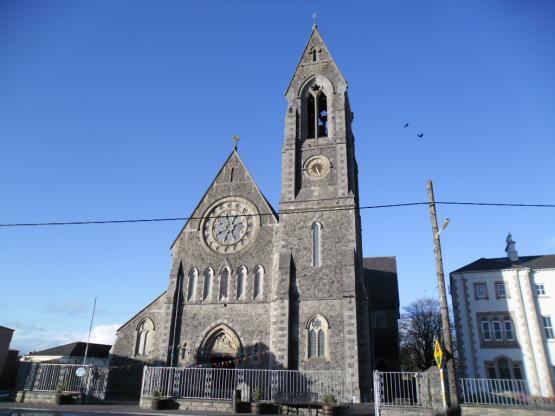
Methodist Church: The practice of the Methodist faith in Mountmellick started in 1748 with a visit from John Wesley. The current church, named after another visiting preacher, Rev. Gideon Ousley, was built in 1882 and this included a school that was in use until the early 1920’s. The church was re-furbished in 1995.
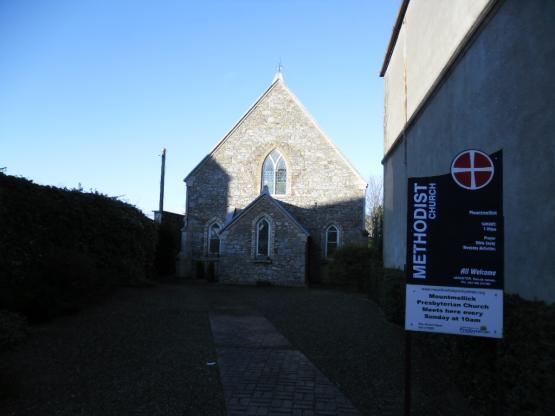
St. Paul’s Church : This Church of Ireland church was built in gothic style and it is the oldest surviving working church in town. It was opened in 1828 and an extension for a vestry was added in 1870. The oldest gravestone in the graveyard is dated 1709 from the time it was a site for a ‘Chapel of Ease’ for Rosenallis Parish.
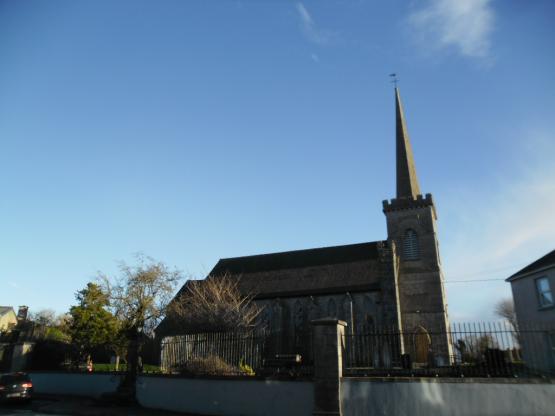
Masonic Lodge: This was formerly the old Methodist Church before the new church was built in 1882. A circular blue coloured glass window depicting symbols of Masonic images such as star, golden compass and set square.
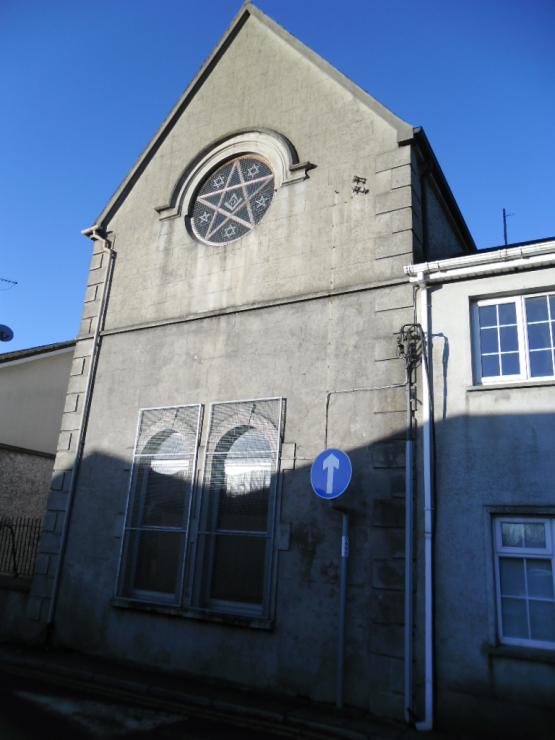
Quaker Meeting House: The Quaker Meeting House was built in 1709 although the Quakers held their first meeting in Mountmellick in 1659. Near the Quaker Meeting House is the site of a former Quaker School and also former Presentation Sisters’ secondary school St. Mary’s College which is now Mountmellick Community School.
Quaker families were Edmundson, Pims, Brewelys, Beales, Fletchers, Odlums, Gatchell, Pencrose, Holton, Martin, Shannon. In 1659 William Edmundson was one of the first members of Quakers to come to Ireland and settled in Mountmellick. Quaker families who eventually settled in Mountmellick were Edmundson, Pims, Bewleys, Beales, Fletchers, Odlums, Gatchell, Pencrose, Holton, Martin, Shannon. The Iron works was founded in the town in 1650’s and other industries such as woollen, cotton spinning, weaving, flour milling, distillery, malthouse, glass bottle manufacturing lead to Mountmellick being known as the ‘little Manchester of Ireland’.
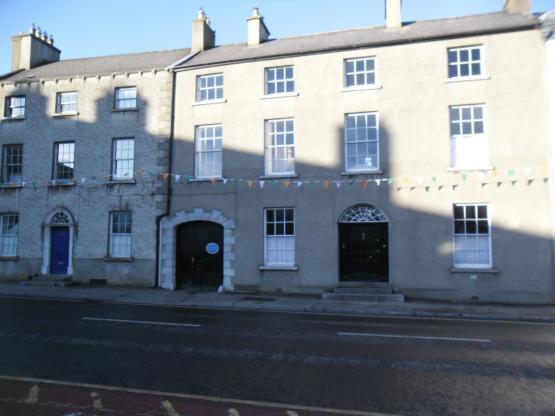
Presbyterian Church: The Presbyterian community started in Mountmellick around 1710, the community started meetings at a house on Patrick Street. The Presbyterian church was opened in 1849 across the road from original meeting house and it closed in 2010. Effects of the 1798 rebellion and Penal laws reduced the numbers of congregation.
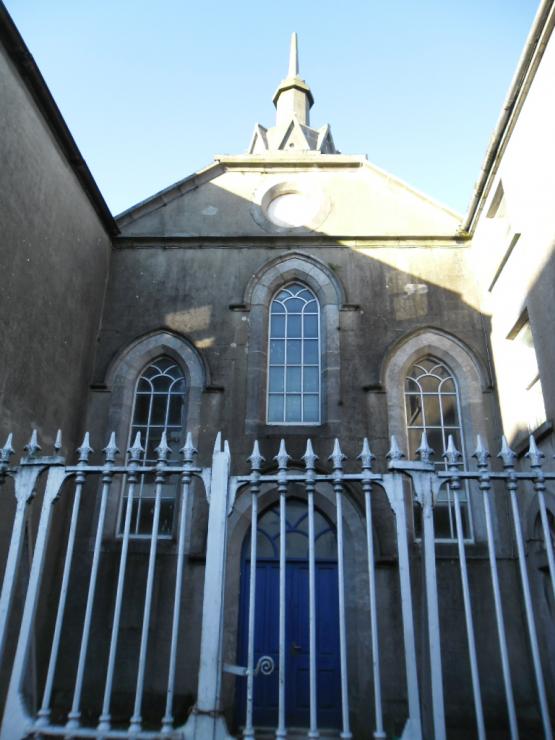
The 1798 Rebellion was a significant uprising in Ireland and Leinster but a google search does not find much evidence for activity in Laois/Queen’s County. However, the monument on Wolfe Tone St. in Mountmellick is our clue to a number of significant events which took place here and nearby at the time of rebellion.
1798 Rebellion Monument: Names of 11 men are inscribed on the monument and these men were hanged in its proximity between the 11th and 13th of June 1798. They were: Patrick Dunne, William Holohan, Francis Dunne, Willie Brock, Daniel Dunne, James Deegan, Thomas Dunne, Patrick Murphy, John Guilfoyle, Daniel Conroy and George Gilligan. The monument was erected in 1878 and the surrounding railing which represents pikes used in 1798 rebellion was added in 1913. Willie Brock was only 18 years old when he died and he was buried in Graigue Cemetery.
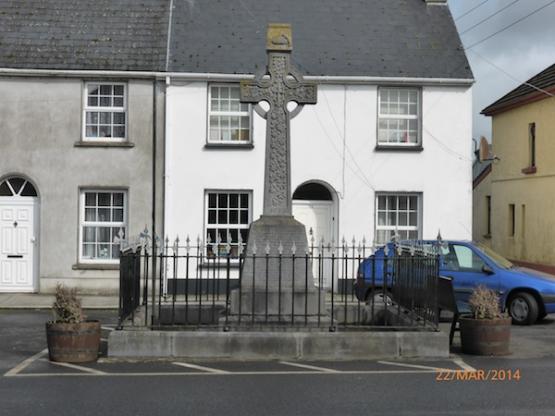
The two hands clasped on the cap are not normally found on Celtic Crosses. Both hands appear to be male and they indicate a farewell to comrades.
The violence of 1798 was visited on Catholic and Protestant in Laois. This memorial reminds us that the struggle for land, power, status and wealth is a messy business. Eleven hangings in 2-3 days mirrored at least an equal number of violent attacks on the Protestant communities as we hear from Paddy Laceys’ reading of Robert Pim Goodbodys diary of events in that year.
Tom Dunne in his study of such attacks in Wexford has identifed that it was the poorer Protestants who bore the brunt of the rebel’s ire. I wonder will we find the same in Laois?
Graigue Cemetery and Chapel: Only an outline of the Chapel exists today in a shape of a crucifix.
Graigue was the site of the first Catholic church in Mountmellick. Building of the chapel was commissioned by Rev. Thady Dunne and continued by of Rev. Anthony Dunne, his nephew. Rev. Thady Dunne was buried in the cemetery surrounding the outline of the Chapel in 1807. Construction of the Church was completion in 1812 and it also contained a school. The church was in use until St. Joseph’s Church opened in 1878.
The headstone shown above is to Fr Thady Dunne who was parish priest at the time of the hanging of the 11 men in 1798.
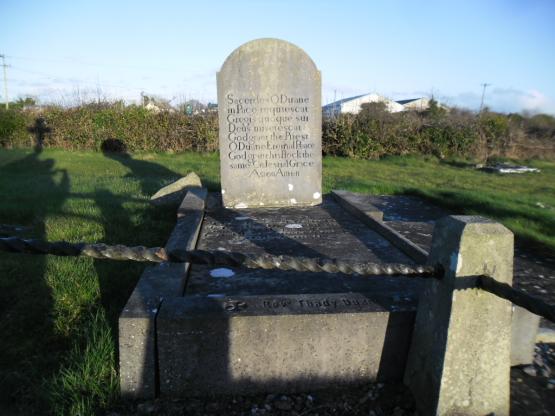
Take your time and stroll between these different places in Mountmellick. Consider the people and families who visited, prayed and worshipped at these places. How did they live their lives and how did the world treat them? The stone buildings and grave memorials that we visit remind us of the living people of the past and of how times have changed.
References:
A concise History of Mountmellick by Alan Dunne. Printer: Leinster Express Ltd.
St. Joseph’s Church Mountmellick 1878-1978. Author: unknown. Printer: Leinster Express Ltd, printed in 1972.
Mountmellick Pictorial Memories by Arnold Crawford and Michael Scott. Printer: Leinster Express Ltd.
Dunne, Tom. Rebels
